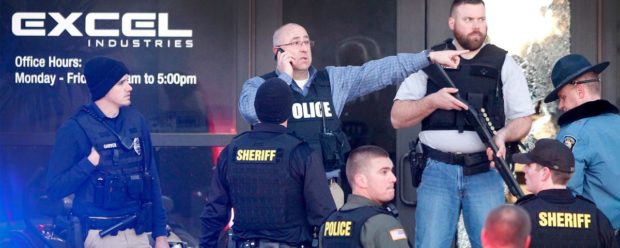Written by: Greg Ellifritz
Within the last two weeks there have been two very high profile active killer events in the United States. The first was when an Uber driver shot eight people in Michigan. The second was when a lawnmower manufacturing worker shot 17 people in Kansas.
Even though the two killings had nothing to do with each other and were thousands of miles apart, the killers used similar tactics. The tactics they used have only recently been adopted by active killers. It is critical for you to understand what these killers are doing so that you can help police work to quickly stop the killings in the event that the next one happens in your neighborhood.
The first tactic the killers had in common was the fact that they both conducted shootings across three different locations. They would shoot a person (or people) and then drive to a different location to shoot some more. These killers know that police no longer wait for SWAT to handle crimes like this. The first officer on scene will aggressively try to stop the killer with gunfire. If the killers want to amass a large body count, they have to quickly change locations before the cops show up.
The second similar tactic the killers used was switching automobiles between attacks. The Uber driver switched vehicles after his first shooting. The lawnmower company employee started out his shooting spree with a drive by shooting. Shortly after that, he ditched the vehicle used by the drive by and carjacked a man (shooting him in the process) to get a new car. He drove the second car to the plant where he did the majority of his shooting.
Changing vehicles makes it difficult for police to capture the shooter in between his targeted locations. It also confuses police response. Officers think they have separate crimes committed by different people and begin tracking down leads independently of the other ongoing investigations(s). That wastes valuable time and allows the killer to continue to operate without fear of being shot by police.
I have written about both of these tactics before in articles titled Mobile Killers and Confronting the Mobile Killer. I predict we will see active killers embracing this tactic even more in the future. It slows police response and buys them more time to rack up the bodies.
What can you do to help police stop the killing in events like these?
Get good vehicle descriptions and license plate numbers of the cars used by the fleeing killers.
Most victims and witnesses in active killer events are scared and (rightfully) primarily concerned with their own safety. Few take note of the killer’s vehicle as they attempt to provide first aid to the victims or are seeking cover for themselves.
If you are near one of these events and hear gunshots, take the time to look for any vehicles that are speeding away from the scene. Note the description of any vehicle that is entered by an obviously armed person at such a scene. Get on the phone to police and give them the accurate description.
Get the license plate number if you can. If not, get the color of the car, the make and model, and very importantly the DIRECTION OF TRAVEL of the escaping shooter. These are the critical pieces of information responding officers need to track down the killer.
This is an important concept to teach everyone in your family. Even if you have friends or family who are unable or unwilling to respond to such a crime with lethal force, everyone can be alert and catch a description of a fleeing car. Make sure that the people you love know that doing that will be the most important thing they can do to reduce fatalities at a future active killer crime scene.

